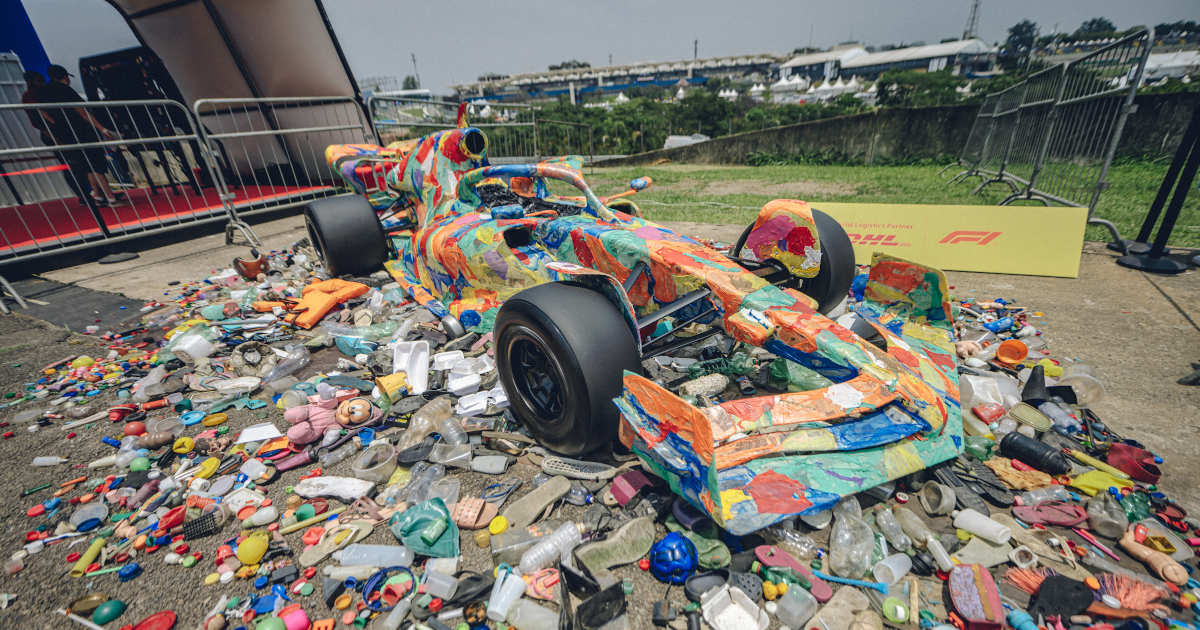Actions speak louder than words: How Barclays, DHL, and Amex embrace sponsorship as a force for good

An estimated $105 billion was spent on sponsorship globally in 2023. The allocation of these significant budgets and the entities they support is entirely at the discretion of the purchasing brand. To quote the common proverb, ‘With great power comes great responsibility’.
At The Sponsor, we champion sponsorship as a force for good. We believe the best partnerships are those that not only provide a return to the sponsoring brand but also seek to make a positive contribution to the communities they impact.
Authenticity and engagement are the keys to a successful partnership. When brands go beyond advertising-based sponsorship and actively make a positive contribution, they are viewed more favourably by audiences, increasing audience propensity to sample, purchase intent, loyalty and advocacy. In simple terms, people buy things from people they like; this is as true of sales as it is for brands and sponsorship.
So how can brands use sponsorship as a force for good to authentically engage audiences and positively shift stakeholder perception?
Enhancing audience Experience
The first step for almost all brands moving beyond simple logo placement is to use their position as a sponsor to enhance the audience's enjoyment or experience of an event. This can be straightforward, like tech brands giving fans greater insights with real-time sports data analysis. There are simple examples outside the tech realm, such as behind-the-scenes content giving fans , free event transportation, or exclusive meet-and-greet experiences. Such activity ensures that exposed audiences are not only aware of the sponsoring brand but have developed an enhanced perception. Partnerships lacking this most basic form of activation are, in reality, nothing more than very expensive advertising.
Gender Equity
Women’s sports have seen tremendous growth in recent years, driven partly by the fantastic work of early adopters such as Barclays. The bank has not only been a long-term supporter of women’s professional game but has also contributed immense support for youth with gender equity through its Girls’ Football School Partnerships. The campaign has grown significantly in recent years and is now active in over 10,000 schools, with 85% of teachers agreeing that the campaign has positively impacted young girls' perception of football.
Earlier in the year, The Sponsor sat down with Rosie Guest, Chief Marketing Officer of Apex Group, and sponsors of Sail GP. The company had a pre-existing aim to improve gender equity across financial services, and this transfers through to its sponsorships. At present Sail GP has no female captains but Apex, working together with Sail GP, is seeking to use it’s position as a sponsor to change this.
“I firmly believe that when we empower women and provide them with the necessary tools, resources, and support, they can excel in any field, including the traditionally male-dominated sport of sailing. By breaking down gender barriers and fostering a culture of inclusivity, we can unleash the full potential of talented female sailors and create a more balanced and dynamic competitive landscape.”
You can read the full article here.
Actions speak louder than words, and such public action transcends written statements of inclusivity and diversity, demonstrating a genuine commitment that is not lost on stakeholders.
Supporting Youth Development
Brands can build positive associations by using their sponsorship budget to support youth development in a particular field. For example, Under Armour compliments its high-profile sponsorships with significant support and development of young talent, improving access to sports equipment for millions of teenagers. What impact does such an activation have on those young people, their friends and families when shopping in the local sports shop?
Similarly, many large financial brands are seeking to enhance perception through their support of young musicians and artists. American Express, for example, hosts the Amex Gold Unsigned, giving young, relatively unknown artists a powerful platform to showcase their talents, play at festivals and build a following. In the art world, American Express’ reputation is enhanced by such activity, not because they put their logo on it but because they make a meaningful and authentic contribution.
Sustainability
Perhaps the one topic that transcends all sports, cultural events and industries is sustainability. Sponsors can provide invaluable know-how to make events more sustainable; they can provide access to expensive tools and technology and use their immense purchasing power to only partner with events demonstrating a genuine commitment to sustainability.
For example, Formula 1 as a sport has come under increasing pressure from sponsors to cut emissions. This pressure has resulted in significant changes to the sport, including the introduction of sustainable fuels, resulting in up to 96% carbon emission reductions as part of its ambitious 2030 net zero pledge.
Sticking with Formula 1, The Sponsor spoke with Arjan Sissing, Global Head of Brand at DHL, to learn how the company is using its position as a sponsor to provide efficient, environmentally friendly logistics for Formula 1’s travelling circus of nearly 35,000 tonnes of racing freight each year.
DHL used Formula 1’s huge platform to build its own brand and raise awareness about sustainability amongst F1 fans.
“At the Brazilian Grand Prix, for example, we used our partnership to raise awareness of marine plastic pollution. We partnered with NGOs and 90 volunteers to collect over 500 kilos of waste. With the help of a local artist, we used this waste product to create a beautiful Formula 1 car sculpture at the track.”
These sustainable activations do not disappear into thin air, they resonate and resurface at key points in the consumer decision-making cycle.
Charity
The most philanthropic sponsorship activity brands can employ when seeking to use sponsorship as a force for good to enhance perception positively is to support charitable events such as Standard Life’s support for Cancer Research Race for Life.
Perhaps the most charitable sponsorship of all was BNY Mellon and Newton Investment Management’s sponsorship of the Oxford Cambridge Boat Race. Having secured the rights to the world’s most famous rowing race, the firm gifted the sponsorship and all its associated brand awareness to the event charity partner, Cancer Research UK. Such an act may indeed reduce BNY Mellon’s brand exposure, but to its existing clients and stakeholders, it undoubtedly increased loyalty and advocacy.
"We're not fussed about the actual coverage of our name this year – we're handing that over. This goes to the heart of businesses being responsible to society and connecting with communities. I feel very strongly that this is what it takes to be a modern and responsible business, we hope that others would then follow suit and we would see more companies thinking actually how could we use our sponsorships in different ways?" Helena Morrisey, Former Chief Executive, Newton Asset Management.
Conclusions
When sponsorships are strategically harnessed for the greater good, they yield tangible benefits for the community and exert a transformative influence on brand reputation, leading to enduring financial returns that persist long after the partnership has drawn to a close.
By aligning corporate support with meaningful social initiatives, sponsors contribute to the community's welfare and forge a lasting connection with consumers who appreciate and remember the positive impact. This synergy between altruism and brand promotion creates a ripple effect, amplifying the resonance of the partnership and solidifying the brand's position as a socially responsible and ethical entity. Consequently, the dividends reaped extend far beyond the initial collaboration, establishing a legacy of goodwill that continues to shape the perception of the brand in the marketplace. continuing to deliver benefits long after the partnership concludes.








